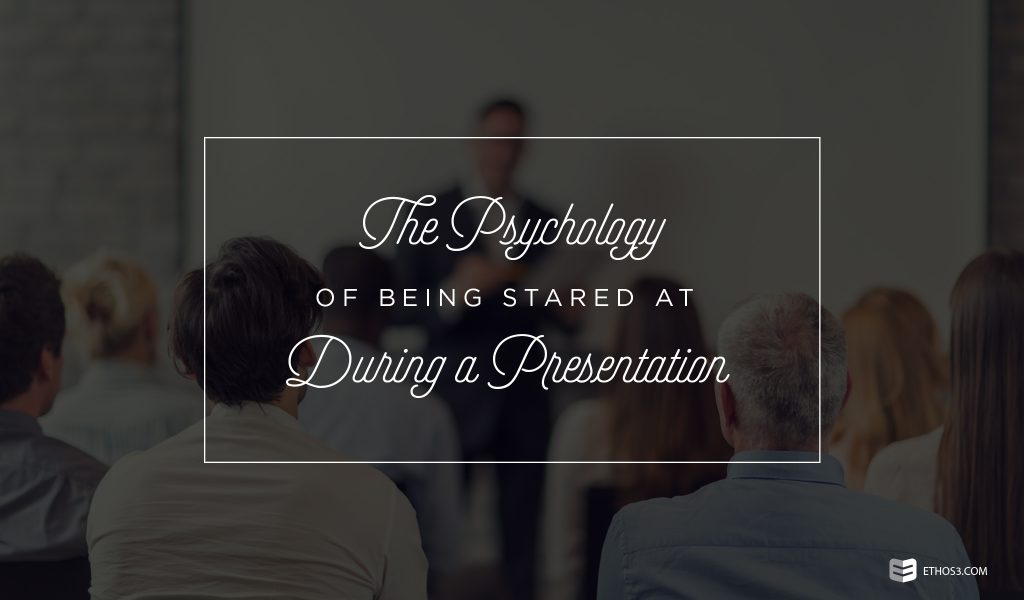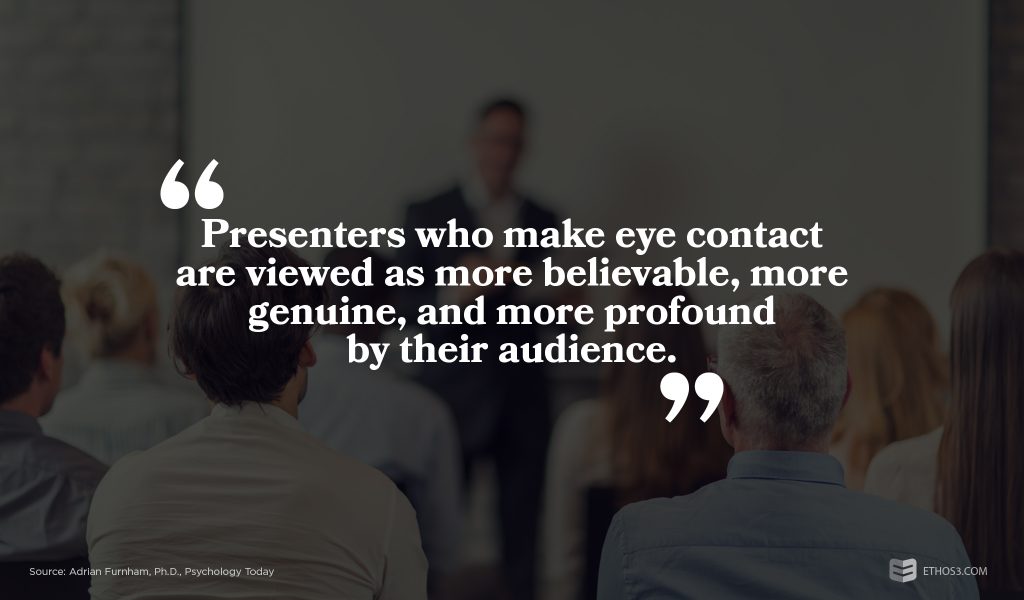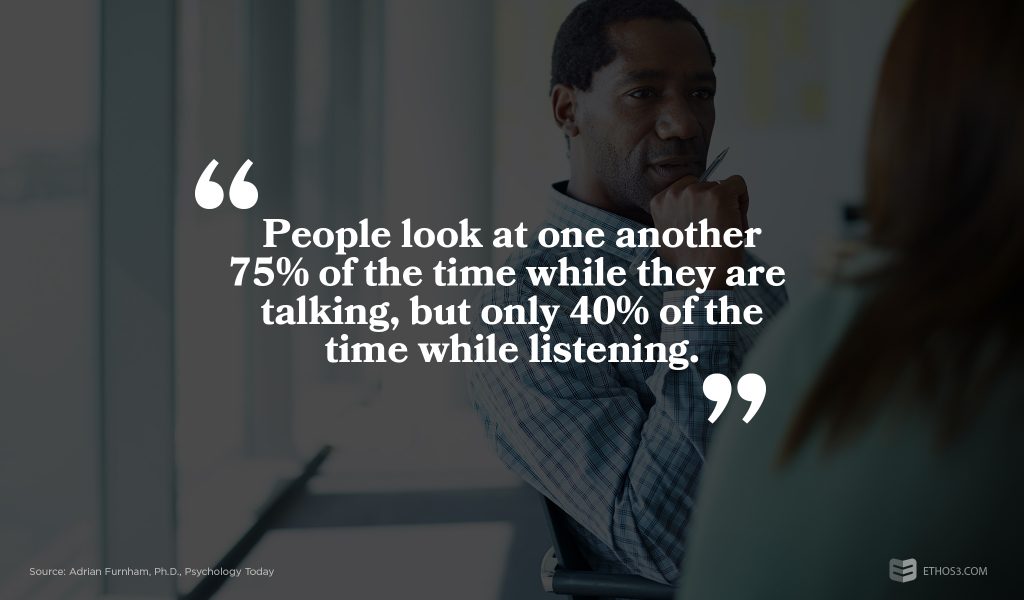Eye contact. It’s something we experience everyday. Eye contact can vary in context depending on who we are speaking to, which can influence our emotions. Presenters have to feel the gaze of a pair of eyes every time they step in front of an audience. This can take a toll on a speaker’s energy and confidence. By understanding the psychological effect of staring, we can better understand what our minds are processing. In this article, we will look at the psychology of being started at during a presentation to help the everyday presenter learn how to increase their confidence.

The Science of Staring
There are many evolutionary aspects to why we make eye contact, and why we feel uncomfortable with the feeling of being stared at. Eye contact is a way to initiate communication. This served as a way to interact with a potential mate, or start a fight for food or shelter. Researchers at the Discovery Channel break it down in this video.
Over time as our communications skills developed, we stopped staring down individuals we wanted to communicate with; but the underlying emotions remained. That’s why the perception of being started at, even if nobody is actually staring at us, still makes us feel on edge. There is an 1898 study published by Edward Titchener that documents this phenomenon. It explains how the establishment of the idea that someone is watching us, whether it’s by God or the government or something else, we as humans are more inclined to follow social norms and act morally. Interesting stuff! Now let’s look at how eye contact effects the presenter’s psyche and emotions.
Power Play
Eye contact and staring has an emotional effect on us today, rather than an animalistic one. A study featured in Psychology Today was able to measure how much power we feel based on eye contact made during interactions with others. The study divided 80 people into three groups: low-power, neutral, and high power. The low-power groups had to think of a time that made them feel disempowered. The neutral group had to recall a time that did not impact their sense of power. The high-power group had to think of a time that they felt powerful.
Next, with the use of virtual reality headsets, the groups interacted with a robot-looking target and a human-looking target. In some cases, the target stared at group members, and in others they did not. The researchers found that participants in the high-power group were more likely to approach targets that were staring at them. Participants in the neutral and low-power groups were less likely to approach the target staring at them, but only if the target looked human. The study says this suggests that “social motives may underpin the effects of power.”
The study was done again, this time with targets that were tall and short, and male and female. This go round, the researchers found that participants who perceived the target as short were more likely to approach it especially if the target was making eye contact. Whether the target was male or female did not have an impact. This complements a 1980’s study that suggests shorter people are more approachable than tall people.
What presenters can learn from this study is that making eye contact with your audience will help you establish your own authority. It also suggests that reminiscing on a time that you felt particularly powerful can help boost your confidence. On the other hand, if you struggle with confidence, a set of eyes gazing at you increases your insecurity.

How to Practice Eye Contact for a Presentation
Before your next presentation, allow yourself some time to practice eye contact. After work, gather up a group of your coworkers or friends to watch your presentation. Ask someone to make note of each time you make eye contact with an audience member. If you are only getting one or two instances of eye contact, chances are highly likely that you are not looking confident during your presentation. Run through your presentation again with more engagement with the audience to get that confident appearance that you are working towards.
Some other notable factors about the psychology of eye contact that might be useful for your next presentation include:
- Eye contact is a form of acceptance or invitation, while looking away is a sign of rejection.
- Presenters who make eye contact are viewed as more believable, more genuine, and more profound by their audience.
- People look at one another 75% of the time while they are talking, but only 40% of the time while listening.
- Extroverts are more likely to make eye contact for a longer period of time than introverts.
- Women look at people they are talking to more often than men do.
- When people close their eyes, it’s an indication of boredom or superiority. This signals a denial in giving or receiving feedback by the presenter.

The function of eye contact has evolved as our society continues to grow. This function may change again as we become more dependent on technology and spend more of our time staring at screens. Only time will tell, but for now we do know that eye contact can make you appear and feel more confident. This is a great and simple tool to use while giving presentations.
More from the Ethos3 Blog:
3 Presentation Skills for Holding Power as a Presenter